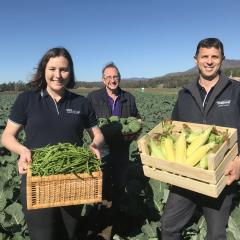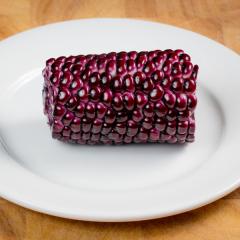Maximising the intrinsic nutritional properties of agricultural products in foods and ingredients
Our research includes:
- Biofortification: screening germplasm and exploratory bioprospecting for nutrition-enhanced products
- Plant breeding to create nutrient-dense fruit, vegetables and nuts
- Bioaccessibility and bioavailability of phytonutrients to humans; impact of phytonutrient consumption on health markers
- Maintenance of phytonutrients: identification of nutritional value decline in the supply chain, and means of preserving nutritional content to point of consumption
- Phytonutrient analysis, sensory and consumer science
- Evaluation of consumer interest and format of new nutrition-enhanced products
.
Project case study: Purple sweet corn is naturally nutritious
Dr Tim O’Hare says a major thrust of the Naturally Nutritious project was to investigate if we could increase the nutrient content of a range of products, so that you could get more bang for your buck, or ‘more nutrition per serve’.
One of the considerations was the ‘look’ of the product that was being developed. As Dr O’Hare explained, humans are visual beings, so it is important for the product to look attractive and visually differentiated from a ‘standard’ product of the same type.
“For example, purple sweet corn, developed from Peruvian purple maize, clearly looks different to yellow sweet corn. Of course, the product has to taste as good – if not better – that the standard product, because after all, this is food and it should taste great. If it doesn’t taste great, then the likelihood of you buying it a second time drops dramatically,” he said.
In some products, the pigment is actually the active nutrient, in which case Dr O’Hare said that can make it easy to look attractive to consumers.
“For example, the orange colour in orange capsicum is zeaxanthin, which is important for slowing the progress of age-related macular degeneration.
Purple and red anthocyanin pigments have been linked to improving cardio-vascular health. So, increasing purple colour also increases the health value of vegetables,” Dr O'Hare said.
The Naturally Nutritious program is funded by Hort Innovation Australia and the Queensland Government via the Department of Agriculture and Fisheries.
More articles about the project
-
-
Sweet corn grown by colours tests if purple is best
2 October 2020 -
Purple sweet corn - naturally nutritious!
1 October 2019



